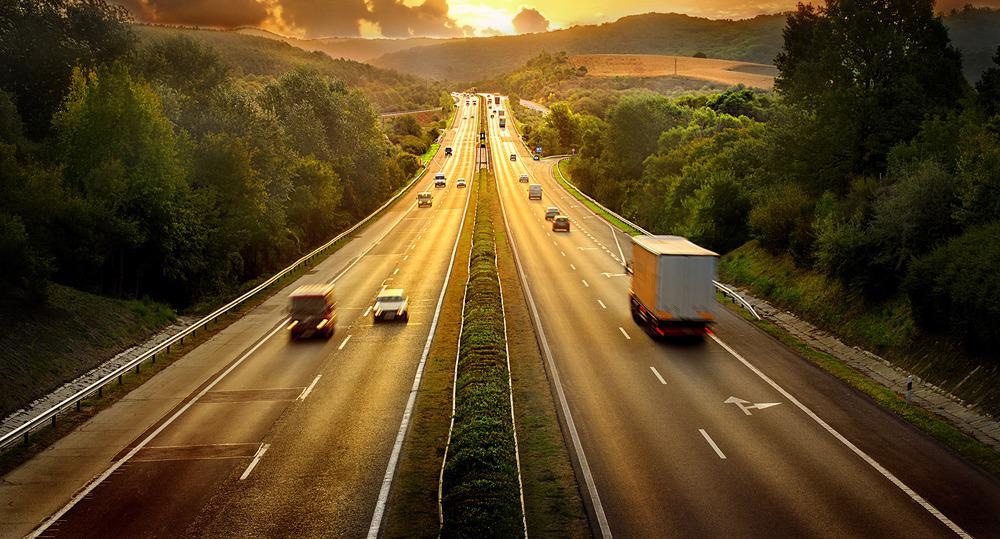AZoCleantech speaks to Luca Schiavoni from Assembly Research about the need for connectivity and its links to reducing carbon emissions. Schiavoni discusses Assembly Research's latest report, which was commissioned by Huawei, on how connectivity in transport is a key factor in reaching net-zero climate goals.
How did you begin your research into how connectivity could reduce CO2 emissions?
The starting point was our existing research on 5G use cases to show how improved connectivity can reduce journeys and make others more efficient. We drew on our previous research and understanding of 5G use cases to identify real-world scenarios where improved connectivity has already reduced transport-related emissions for consumers and businesses. We assessed the current carbon footprint of transportation, drawing on UK Government data, which formed the baseline from which reductions were to be made and calculated against. Our qualitative research and case study informed how we expect transportation usage to change and improve in efficiency as a result of improved connectivity (these are both the direct and indirect benefits).
We complemented this by reviewing existing literature to estimate the potential for improved connectivity to reduce transport-related carbon emissions. We estimated the amount of carbon that could be removed from the UK economy as people become less reliant on transport, and 5G-powered autonomous vehicles and smart tech make the UK’s transport system greener. We thought it would make sense to do this over a 10–15-year period to capture key milestones in the race to net-zero.
Can you tell us the impact that transport has on the environment in terms of emissions?
Reaching net-zero requires action in every area of life. All of us will need to make genuine and sustained behavioral changes in the way we live, work, travel, and socialize. Some changes in behavior will be easier and more accessible than others. One of those is transport.

Image Credit: llaszlo/Shutterstock.com
While carbon reductions in transport will not hit the target alone, it is a hugely important contribution. In 2019, domestic transport was responsible for emitting 122 megatons (million tons of carbon dioxide equivalent). This meant transport was the largest emitting sector of GHG emissions, producing 27% of the UK’s total emissions in that year (455 megatons of CO2e). As a result of the lockdowns introduced to control the spread of coronavirus during the COVID-19 pandemic, daily global CO2 emissions decreased by 17% by early April 2020 compared with the mean 2019 levels, showing just what could be possible.
Why would improved digital connectivity play a huge part in reducing carbon emissions in the transport sector?
Reducing carbon emissions from travel can be achieved in two ways. Firstly by reducing the number of journeys and secondly reducing the emissions per journey. Improved connectivity has the potential to help facilitate both of these.
Electric and driverless vehicles will be a real game-changer with regard to emissions reduction. Due to the improvements in safety, efficiency, and reliability, driverless vehicles will accelerate a shift in the traditional model of vehicle ownership towards mobility and transportation as a service. Fewer people will own a car, instead, ordering shared rides from driverless electric vehicles or catching a driverless bus. That will mean fewer cars being manufactured, fewer parking garages, and smaller parking lots. Most self-driving cars will be electric, which will dramatically reduce the use of fossil fuels.
And then there is the impact of remote working, which will help reduce the number of journeys greatly. The importance of home working in avoiding carbon emissions is highlighted best when you compare physical commuting to meeting and collaborating online which we all became familiar with during the pandemic. We estimated the average annual emissions from commuting to be 545 kg of CO2e per employee, compared to just 3.4 kg if that employee collaborated online through an hour of Zoom-based calls a day. Put another way, meeting over Zoom emits 99.4% less carbon than the average daily commute into the office.
Your team recently carried out a study on the extent to which improved connectivity could directly and indirectly reduce carbon emissions. What were the main findings of the study?
Our report makes clear that connectivity has a major role to play in reducing carbon emissions across various verticals, but transport in particular. We have identified how it can do this directly (e.g. where traffic lights are designed to automatically respond to traffic flows) and indirectly (e.g. where improved connectivity allows for more of the population to work at home and reduce their commute and need for business travel).
The expectation is the impact of CAVs on reduced carbon emissions will materialize from 2025 onwards when CAVs are likely to start appearing on UK roads. The direct impact of improvements in connectivity would result in reduced CO2e emissions of 4.6 megatons between 2021 and 2035. This is the equivalent of taking more than 100,000 double-decker buses off UK roads. We expect the indirect effects of connectivity to be the largest contributing factor to lowering emissions from transport. We estimated that this could amount to a total saving of 23.2 megatons of CO2e between 2021 and 2035.
Combining these direct and indirect effects, connectivity can save a total of 27.8 megatons of transport-related CO2e emissions between 2021 and 2035. This is the equivalent of taking 750,000 lorries off Britain’s roads or more than twice the annual CO2 emissions of Greater Manchester.
What kind of connectivity solutions in transport are key to achieving net-zero?
The enhanced connectivity of vehicles on the road is expected to deliver a wide range of benefits. Over the next few years, the need for vehicles to talk to each other and traffic management systems will become more compelling. These improvements will be possible as a result of the concepts of vehicle-to-everything (V2X) and vehicle-to-vehicle (V2V) communication. Some of these technologies are already being tested in the UK, although their benefits will only materialize when gigabit-capable broadband becomes more widely available across the country.
Better signaling and communication between trains can result in reduced space between them and improve their flow. These efficiency improvements will generate savings on railway infrastructure and have a positive impact on carbon emissions.
What must be done to ensure that digital connectivity is improved in the next few years?
Greener technology must be built into our COVID-19 recovery plans to deliver a stronger economy and more resilient society as we accelerate on our path to net-zero. These include ensuring the infrastructure is in place to support connected and autonomous vehicles, and improvements in connectivity along railways to encourage commuters to consider swapping cars for trains.
If working from home is to be an option for many, then the pace of gigabit-capable network upgrades will need to accelerate, particularly in more rural areas where connectivity is often poorer to start with, and also where workers face some of the longer commutes. By prioritizing and incentivizing rollout to these areas first, the GHG emissions from these longer commutes could be reduced.
Are there any challenges to improving digital connectivity solutions on transport and how could they be overcome?
At the moment, only some of the more innovative transportation technologies are being tested in the UK. Operators should commit to more trials to show industry, and the country, what is possible through connectivity. They should look to share best practices from pathfinder cities which are showing how V2X will enable vehicles to adapt to traffic light systems, reduce stop/starts, and improve air quality in towns and cities.
Could this technology be used in any other sectors to help reduce carbon emissions?
Upgraded and more widely available connectivity will enable a significant reduction in emission across a wide range of activities and sectors, including transport, energy, manufacturing, and healthcare. Estimates suggest ICT technologies are capable of reducing 10 times more greenhouse gas emissions than their own footprint. The efficiencies generated by enhanced connectivity in all these verticals will result in reduced energy consumption, time savings, and reduced reliance on travel, which will all contribute to hitting the net-zero target.
For example, smart grids result in greater efficiency and cost savings and make an energy system able to better transition towards low-carbon solutions. In manufacturing, enhanced connectivity enables reduced downtime and reduced costs for maintenance and logistics. In healthcare, connectivity will reduce the need to travel for consultations, surgery, and mean fewer ambulance trips even in emergencies.
Where can readers find more information?
Our report on connectivity-enabled carbon reduction in transport is available at: https://www.assemblyresearch.co.uk/press-comments/reducing-carbon-in-transport
About Luca Schiavoni
 Luca has a wide range of experience in the regulation of telecoms and technology, having monitored regulatory developments in Europe and a number of growth markets. He tracks new and emerging areas of regulation affecting the sector, such as privacy and data protection, and cybersecurity. Areas of specialization also include regulation for the Internet of Things, spectrum policy, and roaming.
Luca has a wide range of experience in the regulation of telecoms and technology, having monitored regulatory developments in Europe and a number of growth markets. He tracks new and emerging areas of regulation affecting the sector, such as privacy and data protection, and cybersecurity. Areas of specialization also include regulation for the Internet of Things, spectrum policy, and roaming.
Prior to joining Assembly, Luca was a Senior Analyst in Ovum's regulation team for six years. He has a BSc in Political Science from The University of Bari and an MSc in Communications Regulation and Policy from The London School of Economics.
Disclaimer: The views expressed here are those of the interviewee and do not necessarily represent the views of AZoM.com Limited (T/A) AZoNetwork, the owner and operator of this website. This disclaimer forms part of the Terms and Conditions of use of this website.